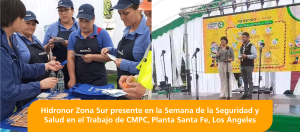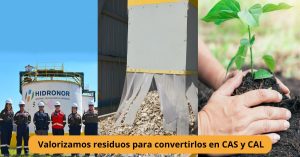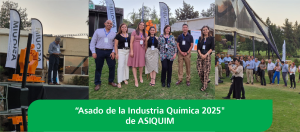The valorization of solid and liquid waste with calorific value as raw material to generate fuel has become an excellent alternative to contribute to the environmental sustainability of the country..

Waste recovery is an excellent initiative on the path to decarbonization. Under this premise, at Hidronor we contribute to environmental sustainability thanks to our solutions and services focused on generation of Alternative Fuels, whether Solid (CAS) or Liquid (CAL), which can be generated from waste that comes from different industries (such as pharmaceuticals, chemicals, consumer goods, food, tobacco, among others) to reduce their carbon footprint .
CAS and CAL Process
In the case of CAL, discarded industrial waste such as lubricating oils, solvents and paint remains with calorific value are used as raw materials for its generation. For its part, the CAS uses solid waste such as textiles, wood, plastic, among others. The process to obtain CAL begins with the reception of the waste and then selects those that have a calorific value of around 7 thousand kilocalories per kilogram.
These wastes are analyzed in our laboratories to measure parameters that are critical, such as the metal content and the presence of some compounds that are regulated by the recipients and, after that, a formula is made to properly combine all these wastes that may include not only lubricating oils, but also solvents, paint residue, alcohols, among others, to make an alternative fuel.
In the case of CAS, the process consists of crushing the waste to a specific size requested by the end consumer, which is then used in cement kilns as an alternative fuel, thus reducing the carbon footprint and emissions to the environment.
At Hidronor we contribute to environmental sustainability and climate change by reducing the carbon footprint thanks to our services!







